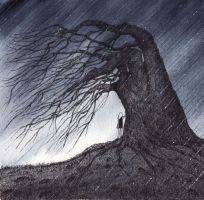December 18, 2014
Revised plans approved for development of iconic BBC Television Centre
 New office space aimed at occupiers in the creative sector is included in Stanhope and Mitsui Fudosan’s planned redevelopment of the former BBC Television Centre in west London. The London Borough of Hammersmith and Fulham have granted planning permission for the revised plans for the mixed use development of the iconic building; to include the demolition of the existing Stage 4 and 5 office buildings and their replacement with a more sustainable and efficient new ten storey office building with improved facades, designed by architects AHMM. A change in use from residential to commercial has also been approved for a new nine storey office building fronting Hammersmith Park on the site of the old BBC restaurant block, with an overall increase in office accommodation across the site from 350,000 sq ft to 519,000 sq ft.
New office space aimed at occupiers in the creative sector is included in Stanhope and Mitsui Fudosan’s planned redevelopment of the former BBC Television Centre in west London. The London Borough of Hammersmith and Fulham have granted planning permission for the revised plans for the mixed use development of the iconic building; to include the demolition of the existing Stage 4 and 5 office buildings and their replacement with a more sustainable and efficient new ten storey office building with improved facades, designed by architects AHMM. A change in use from residential to commercial has also been approved for a new nine storey office building fronting Hammersmith Park on the site of the old BBC restaurant block, with an overall increase in office accommodation across the site from 350,000 sq ft to 519,000 sq ft.

























December 17, 2014
Flexible working is best built on the foundations of a great office
by Charles Marks • Comment, Flexible working, Workplace design
(more…)